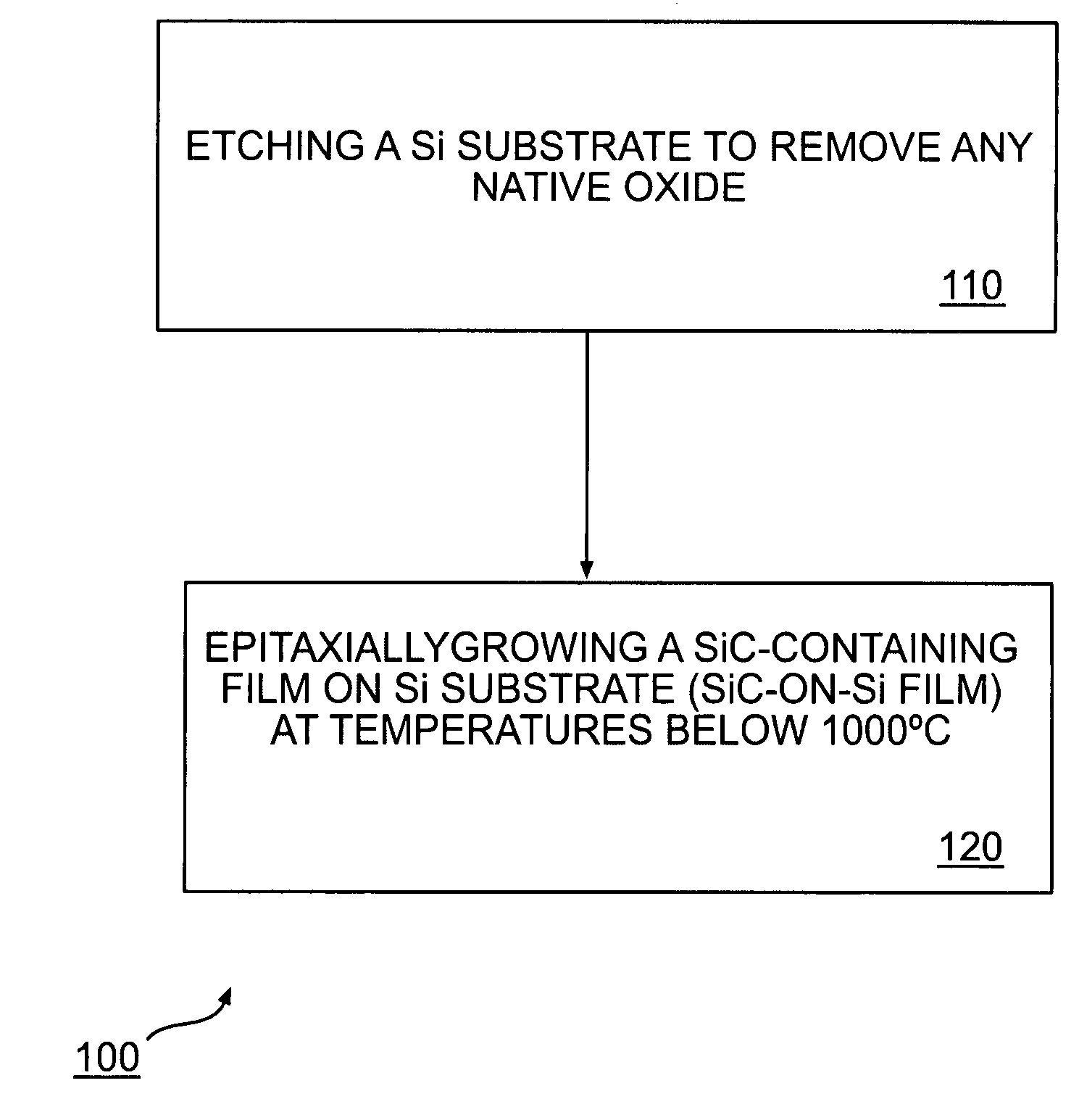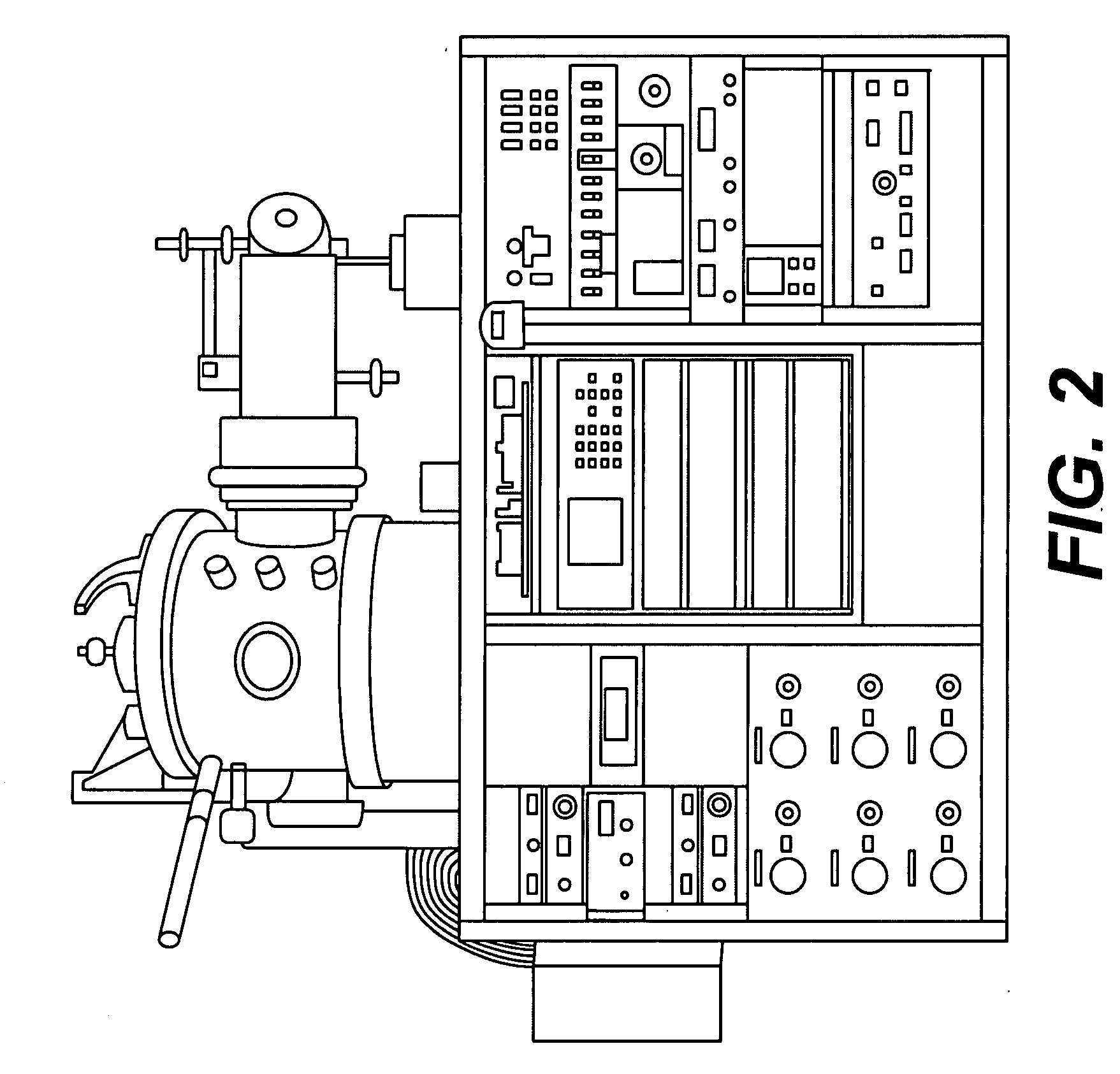Method of producing large area SiC substrates
- Summary
- Abstract
- Description
- Claims
- Application Information
AI Technical Summary
Problems solved by technology
Method used
Image
Examples
example 1
Deposition of SiC Films on Si Substrate Using RF Plasma with Resistive Heating of the Si Substrate
[0044]Two-inch, single-side polished Si (111) wafers were used as substrates. The Si wafers were etched in 10% HF to remove any native oxide. The etched wafer was dried with nitrogen gas and immediately loaded into the growth chamber of a sputtering system shown in FIG. 2.
[0045]Briefly, the Si substrate was clamped into a 2″ resistive heater and the chamber was evacuated to a base pressure of about 5×10−8 Torr. Once the base pressure was reached, the substrate / heater assembly was ramped to a 850° C. growth temperature at a ramp rate of 3° C. / minute. Argon gas was used as the RF plasma gas. The argon gas flow was set to 50 sccm. During deposition, the chamber was actively pumped and maintained a chamber pressure of about 8 mTorr. The RF forward power was 100 watts, with a DC bias of approximately −250V. The sputter gun used a 3″ SiC target.
[0046]The RF sputtered SiC on the Si substrate a...
example 2
Diode Devices Using SiC Film Deposited on Si Substrate
[0047]Several diode devices were created by lithographic patterning and evaporation of Cr / Au contacts to the SiC-on-Si film produced in Example 1. The processes used to create the devices (i.e., metal deposition and lithographic lift-off processes) were all standard diode fabrication processes well known to one skilled in the art. A representative structure of such devices is shown in FIG. 8.
[0048]Electrical testing on the diode devices was performed using a Keithley 4200 Semiconductor Characterization System (Keithley Instruments, Inc., Cleveland, Ohio). The current-voltage (IV) characteristics of the devices were characterized using the Keithley Interactive Test Environment software (Keithley Instruments, Inc., Cleveland, Ohio). A single diode device was placed under DC bias between the Au / Cr contact on the top surface (anode) and the ohmic contact created between the tester vacuum chuck and the Si substrate. The bias was swept...
example 3
Deposition of AlN on the SiC-on-Si Film
[0049]AlN with a thickness of 1000° A was deposited on the SiC-on-Si film produced in Example 1 using MOCVD to generate an AlN-on-SiC-on-Si film. FIG. 10 is an x-ray diffraction survey scan of the AlN-on-SiC-on-Si film showing both the SiC peak and the AlN peak. FIG. 11 is an x-ray rocking curve of the AlN-on-SiC-on-Si film showing a FWHM of 7441 arcsec or 2.0 degrees.
PUM
 Login to View More
Login to View More Abstract
Description
Claims
Application Information
 Login to View More
Login to View More - R&D Engineer
- R&D Manager
- IP Professional
- Industry Leading Data Capabilities
- Powerful AI technology
- Patent DNA Extraction
Browse by: Latest US Patents, China's latest patents, Technical Efficacy Thesaurus, Application Domain, Technology Topic, Popular Technical Reports.
© 2024 PatSnap. All rights reserved.Legal|Privacy policy|Modern Slavery Act Transparency Statement|Sitemap|About US| Contact US: help@patsnap.com










